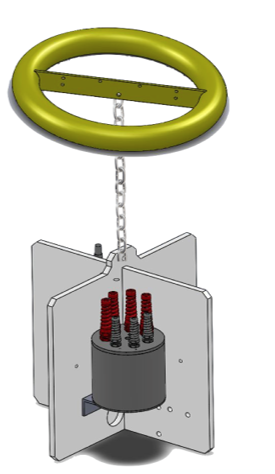Ocean Dynamics & Modeling projects
Experimental evaluation of an adaptable mobile network drifter system for real-time water movement and quality monitoring in the IRL

The Indian River Lagoon (IRL) is one the most biodiverse estuaries in North America. The lagoon is a brackish system with five inlets that allow movement of ocean water to and from the lagoon. Due to recurrent anthropogenic and climate-driven disturbances in the lagoon (including sea-grass die offs, mammal mortality and harmful algal blooms), there is a need for understanding the movement of water and exchange rates with the coastal ocean, the major source of “clean” water. A drifter system that was designed and manufactured at FAU Harbor Branch Oceanographic Institute is helping to provide answers to questions surrounding water movement in the lagoon.
The system consists of an anchor made of two perpendicular plates and a floating ring connected by a chain to decouple the plates and the float movement, limiting Stokes drift. The overall vertical length is 50-cm, which enables shallow water sampling, therefore suited for shallow system such as the IRL. The plates hold all the water quality sensors, which include an Atlas scientific conductivity sensor, Turner Cyclops fluorometers (CDOM and chlorophyll-a), and a Campbell Scientific turbidity and temperature sensor. The floating ring is rigged with a GPS and a GSM antenna that connects the drifter to the 4G network. Real-time data are streamed online and stored on the drifter. The whole package is powered internally by batteries mounted on the plates. Both the sensors package and the depth of operation are modular. Multiple drifters are used at the same time to capture the various transport pathways
Salinity patterns collected from drifters provide information about freshwater inputs and water exchanges between the lagoon and the ocean. The data visualization the system provides on Google Earth gives context to measurements, allowing scientists to more clearly see processes like mixing and tidal cycle. For example, CDOM distribution collected from the system gives scientists input into water types.
One major achievement of the project is the creation of a Standard Operating Protocol and software tools to facilitate parsing and data visualization. Drifters have great potential for in situ monitoring of the lagoon with a versatile, recoverable and low-cost network. Drifters have potential to monitor transport timescales, residence times and flushing times of run-off waters, discharge waters from creeks and canals, seeping water from the ground, and oceanic coastal waters, key drivers of the IRL health.